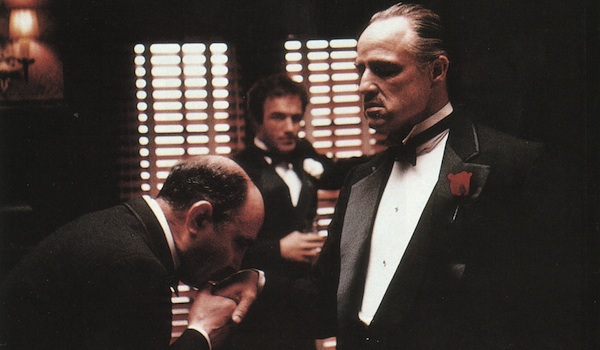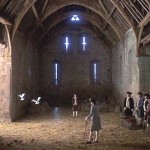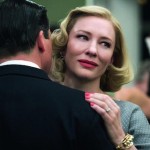The Godfather Review
If I’m being honest, the first time I watched it, I didn’t want to love “The Godfather.” It’s so cliché. I wanted to buck the trend. I wanted to write a searing piece about this overrated “masterpiece†that everyone loves so much.
But I can’t. It’s too damn good.
Seriously, this film is too damn good. Having seen it plenty of times before, I put it on at midnight in preparation for this review. I thought it was something I could just casually watch, since I knew the story and the main players so well. But it gripped me in ways no other film does. Three hours later, my night of sleep was shot, but I didn’t care. I think I probably slept with a giant smile on my face as I dreamt about Michael, Vito, Sonny, Tom, and the rest of the Corleones, while Nino Rota’s phenomenal score played in my head. Pathetic? Maybe. But this film doesn’t get out of my head very easily. Like I said, it’s just too damn good.
“The Godfather†opens with one of film history’s best extended scenes. Don Vito Corleone (Marlon Brando) is celebrating his daughter’s (Talia Shire) wedding. According to Sicilian tradition, no man can refuse a request on his daughter’s wedding day, so The Don is almost overwhelmed by requests. One man wants revenge. Another wants a part in a movie. These scenes are monumentally important because they introduce us to these characters and draw us into their world. And we learn the things The Don cares most about—family first, respect second, business a distant third.
Then, the story proper kicks into gear. A man named Sollozzo comes to the Corleones with a proposition to extend their empire to the world of drugs. Don Vito respectfully refuses. He fears his political connections will disintegrate if he gets involved in narcotics. His son and heir, Sonny (James Caan), disagrees but goes along with his father. Sollozzo, however, isn’t the kind of man to take no for an answer. He kills one of Don Vito’s men and attempts to kill the Don himself. This starts a war among New York’s five families. And with the hot-headed Sonny in charge, rather than the soft-spoken World War II hero Michael (Al Pacino) or the clever, calm adopted Corleone brother Tom Hagen (Robert Duvall), it’s clear that animosity will run thick for years and much blood will be spilt in this war.
The bulk of the film is actually told from Michael’s perspective. When the film begins, he wants little to do with his family and the business. He has a girlfriend, Kay (Diane Keaton), whom he cares deeply for, and he desperately wants to show her he is not like his father. Over the course of the film, however, he gets sucked into the mafia’s world and turns into a monster. The film’s final shot is almost as memorable as its opening. Kay stares at her husband, shocked by what he has become, and we learn the film is more than just a story about crime in New York City. It’s a Shakespearian tragedy about the corrupting influence of power and how it can lure even the most good-intentioned men into a life of evil.
But the most compelling parts of “The Godfather†involve Don Vito. That’s not to take away from any of the other characters because they help contribute to one of the greatest films ever, but there’s a reason why Don Vito is one of the most memorable, most often impersonated, characters in film history. That reason is the monumentally brilliant performance by Marlon Brando. The voice and the movements are the most memorable things about this performance, but Don Vito is actually quite an emotional figure. For someone so against signs of weakness, Don Vito wears his emotions on his sleeve in more than one scene. It’s tragic seeing him apologize to Michael, and his mourning scene is more brutal than any other character’s. And if you need any other proof of the heft of this performance, it shoved the real lead performance by Pacino into the Supporting Actor category at the 1972 Oscars.
The rest of the cast should also be commended for crafting three-dimensional characters that we care about. Al Pacino is much more restrained than he typically is. Even when Michael transforms into a vicious shell of his former self, he doesn’t go over-the-top. Ironically, even without a trademark shouting scene, this is one of the great actor’s best performances. James Caan is fiery as Sonny. He gets to evoke more than the rest of the cast combined, and he, like Pacino, was awarded a Best Supporting Actor nomination for his work. The film picked up a third Supporting Actor nomination for Robert Duvall as Tom Hagen. He stays in the background, behind the more vocal personalities, but Duvall always makes the character’s presence known.
The film boasts one of the best, tightest screenplays of all-time, which is wild, considering it’s nearly three hours long. But nothing in “The Godfather†feels extraneous. It’s a bold, epic saga, and Coppola deserves all the credit he’s ever received for crafting such fine writing.
But beyond the acting, beyond just the screenplay, “The Godfather†is one of the most immaculately put together films ever. Everything about it works perfectly. The score, the editing, the direction, the art direction, cinematography, everything—it’s all perfect. I’ve never seen a film that brings each aspect together in such fine fashion, and I doubt I ever will.















